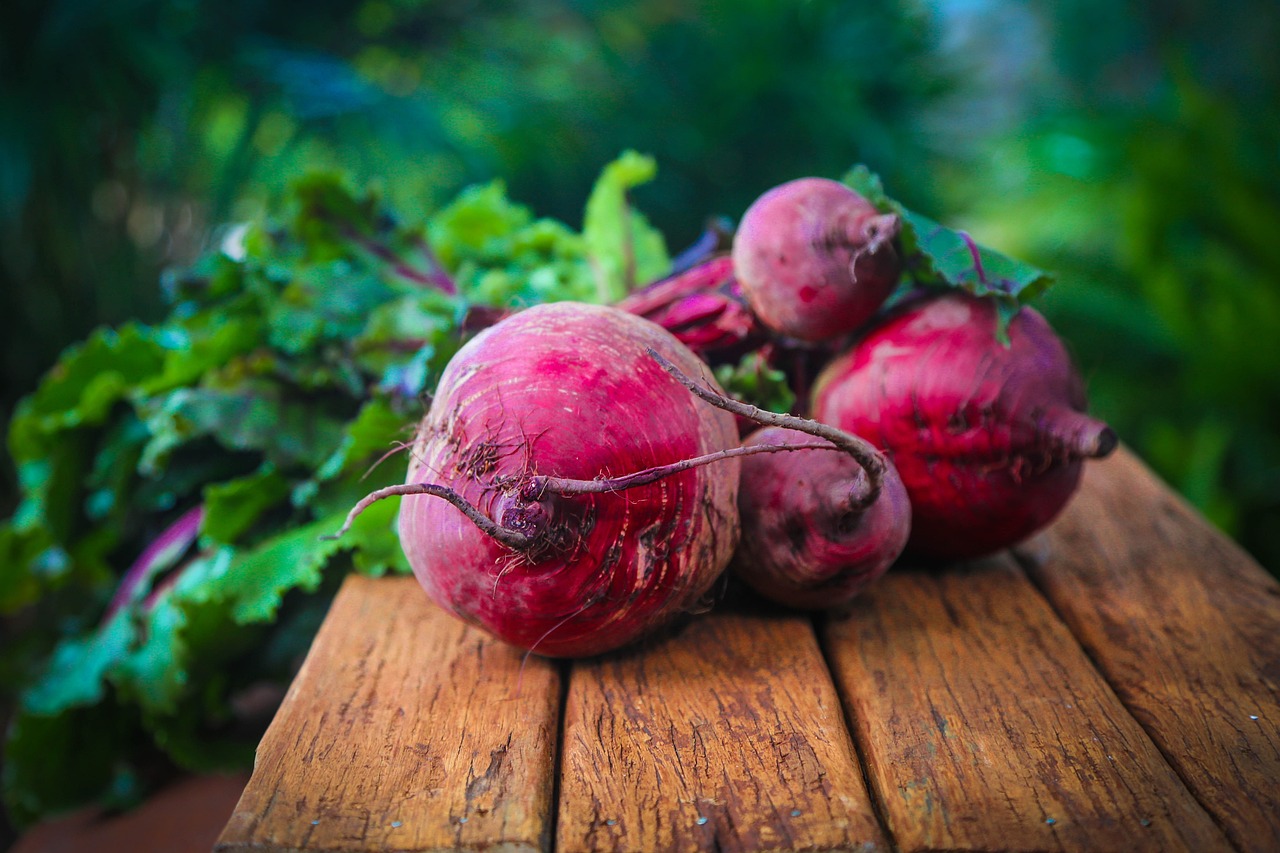Keeping blood pressure levels healthy is essential for your overall health, and whilst medication can help, making dietary changes can also have an impact on helping lower blood pressure. So, let’s get into the most effective foods to lower blood pressure.
Beets: The Nitric Oxide Powerhouse
Beets are the king of lowering blood pressure when it comes to food. A ton of studies have been done on beet juice and beet supplements to lower blood pressure. That comes down to the nitrates in theme, as this helps raise nitric oxide levels in the blood. Nitric oxide plays a crucial role in blood vessel health, as it helps relax and widen the arteries, allowing for better blood flow and lower blood pressure. Including beets, beet juice, or other nitrate-rich vegetables like spinach, celery, and radishes in your diet can boost nitric oxide levels and contribute to lower blood pressure.
Berries: Antioxidants Matter
Berries, such as blueberries and strawberries, are not only delicious but also packed with antioxidants called anthocyanins. These compounds have been linked to lower blood pressure in several studies. A 2019 review suggests that anthocyanins and anthocyanin-rich berries can have a positive effect on blood pressure, although further research is needed to fully understand the mechanisms behind this relationship.
Watermelon: More Nitric Oxide
Watermelon is not only a refreshing summer fruit but also contains an amino acid called citrulline. The body converts citrulline to arginine, which helps produce nitric oxide. Nitric oxide relaxes blood vessels and encourages flexibility in arteries, promoting better blood flow and lower blood pressure.
Multiple studies have shown that watermelon and watermelon juice can lower blood pressure. For example, a 2023 controlled crossover trial found that watermelon juice lowered systolic blood pressure over two hours.
Garlic: Ancillin is Interesting
Garlic has long been praised for its potential health benefits, including its ability to lower blood pressure. Garlic contains allicin, a compound with antibiotic and antifungal properties. A 2020 review concluded that garlic, particularly Kyolic garlic, can reduce blood pressure, arterial stiffness, and cholesterol levels.
Incorporate garlic into your meals to enhance flavor. Use it in stir-fries, soups, omelets, or as an alternative to salt as a flavoring.
Fermented Foods: Microbiome
Fermented foods are rich in probiotics, which are beneficial bacteria that may help manage blood pressure. A 2020 study analyzed data from adults aged 50 or older and found that women who consumed fermented soy foods had a lower risk of hypertension. However, this relationship did not appear to hold true for men.
It's worth noting that sodium is a risk factor for high blood pressure. However, a 2017 study did not find an increased risk of high blood pressure with the consumption of salt-fermented vegetables so it may not apply in this case.
Oats: Soluble Fiber and Magnesium for Blood Pressure Control
Next up we have oats. Oats are packed with two essential nutrients: soluble fiber and magnesium. Soluble fiber helps protect blood vessels by reducing levels of harmful cholesterol, which can lead to the buildup of plaque in the arteries. This buildup can contribute to high blood pressure. Magnesium, on the other hand, helps relax blood vessels, promoting healthy blood flow and lower blood pressure levels. Including oats in your diet, whether in the form of oatmeal, granola, or overnight oats, can provide these beneficial nutrients to support blood pressure control.
Dark Leafy Greens: A Potassium and Magnesium Boost
Dark leafy greens such as spinach, Swiss chard, kale, beet greens, and collards are excellent additions to a blood pressure-lowering diet. These greens are rich in both potassium and magnesium, two essential nutrients for maintaining healthy blood pressure levels. Potassium helps counteract the effects of sodium, which is known to raise blood pressure. By increasing your potassium intake through leafy greens, you can help eliminate excess sodium and promote lower blood pressure. Additionally, magnesium in dark leafy greens helps relax blood vessels, further supporting healthy blood flow and optimal blood pressure.
Beans: A Nutrient-Packed Option
Beans are a versatile and nutrient-packed food that can contribute to lower blood pressure. Whether you prefer kidney beans, black beans, or chickpeas, incorporating beans into your diet can provide essential nutrients like potassium, magnesium, and soluble fiber. Potassium helps balance sodium levels and reduce blood pressure, while magnesium promotes blood vessel relaxation. Soluble fiber in beans helps lower cholesterol levels, protecting blood vessels and supporting healthy blood pressure. Opt for low-sodium canned beans or soak and cook dried beans to reduce sodium intake while enjoying the benefits of these blood pressure-friendly legumes.
Citrus Fruits: Vitamin C for Blood Pressure Regulation
Citrus fruits, such as oranges, lemons, grapefruits, and tangerines, are not only refreshing but also beneficial for blood pressure regulation. These fruits are rich in vitamin C, a powerful antioxidant that supports healthy arteries and lowers blood pressure by reducing inflammation. Vitamin C also helps increase nitric oxide levels, protecting the lining of the arteries and promoting optimal blood flow. Including citrus fruits in your diet, whether consuming them whole or as freshly squeezed juice, can provide a significant dose of vitamin C to support blood pressure management.



